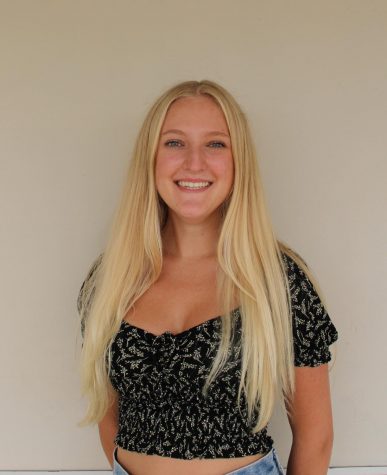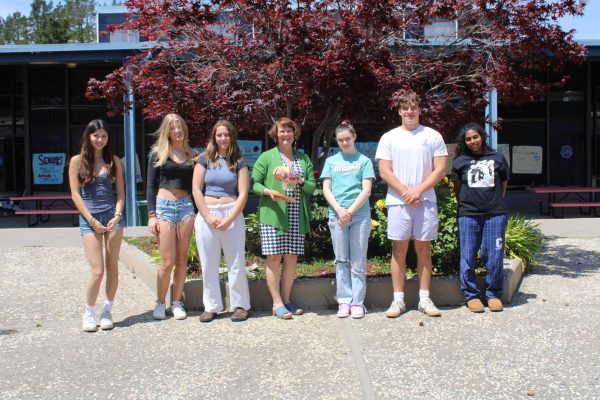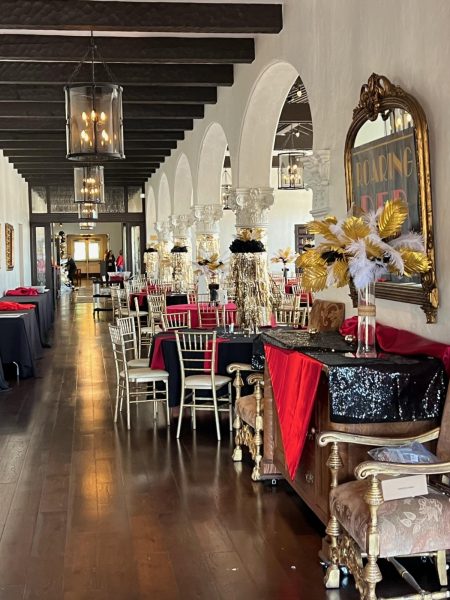Juniors Progress to State Science Fair
After researching and producing innovative science and engineering projects, members of the Students In Research club competed in the Contra Costa County Science Fair on March 12. Juniors Daylin Atwood, Cathy Kenderski, and Sarah Wu all won 1st place in their respective categories, qualifying to compete at the fair’s statewide competition.
Because of restrictions due to the pandemic, this year’s competition was entirely virtual.
Atwood said, “Each participant had to submit a video explaining the main idea of the project, a virtual project board built on Google Slides, a research paper, and an abstract. Typically judges would walk around the fair and look at the physical project boards, but this year they reviewed them online. The most stressful part of the process by far was the virtual interview; we joined a Zoom meeting with judges in our category, (for me this was a group of engineers), and we pitched our project to them and answered their questions.”
Kenderski and Wu entered the fair as a team in the physical sciences category in which there were 11 other projects. Their project, which took 1st place in the category, focused on creating a new, low-cost detection method for PET plastics, or polyethylene terephthalate.
“When plastic is in the ocean for a long time, it starts to degrade and starts to leach individual monomers…We created this method of detecting terephthalate, which can be really important because most of the time plastic is not visually detectable; it’s degrading to microplastics that can be really key for directing cleanup efforts,” said Kenderski.
While methods of detecting microplastics already exist, the pair managed to develop a way “to make it low-cost because right now, all the methods of detecting microplastics are pretty costly and technically challenging,” said Wu.
“We basically converted terephthalate into 2-hydroxyterephthalic acid, which is fluorescent. We observed the color of each sample changed in correlation to the amount of terephthalate. We’ve got the color scale for you to reference, which would be really inexpensive because all they need really is our color scale which we could give out for free,” added Wu.
In contrast, Atwood’s project was engineering-based and focused on redesigning a common device: the asthma inhaler. “I redesigned the common asthma inhaler so it’s easier for people to interact with, and more medicine from the inhaler reaches the lungs,” said Atwood.
Atwood said, “Awards are given by grade level and category–I entered into the engineering category for 11th grade. There were 10 other projects in my specific category, and I won 1st place. I also received special awards aside from 1st place, but those are still to be announced.”
After months of hard work and preparation, qualifying for the state competition was a huge excitement for all 3 students. Wu said that she “was in complete disbelief at first, but [is] very excited now.”
“I was shocked that I won in my category. I knew how much work I had put in over the last few months, but it was still amazing to me that my project was recognized by real engineers and I beat some very impressive projects by people that I respect so much. It was even more exciting that Cathy and Sarah also won 1st place and that we all qualified for the State level competition,” said Atwood.
After qualifying, Kenderski reports that she and Wu plan on moving forward in the competition.
“I competed in the State Fair my freshman year, so I know from experience that there’s a lot more competition at that level…Most of [the projects] have either undergraduate or graduate mentors that have helped them with their research along the way. It’s definitely a big hill to climb, but we’re looking forward to it,” she said.
Between now and the fair in April, the pair are planning to obtain ocean samples from the Bay and expand upon their research.
They also wished to extend their thanks to the Campo science department, who provided support throughout the research process, access to lab space, and guidance. “Cathy and I had to use the fume hood and the lab space at Campo, and of course it’s kind of difficult to arrange that during COVID. But [science teacher Roxanna] Jackman was super helpful about that and [science teacher Stephanie] Verbanszky lended us her fume hood to use…[science teacher Rachel] Eaton helped us virtually with our project and [science teacher Rene Gillibert] was also our supervisor for some of the days we were in the lab,” said Wu.
Atwood, Kenderski, and Wu are also the leaders of the Students In Research club and encourage more students to get involved in the club and the fair in the future. Kenderski said, “I hope more people participate in the fair moving forward. It’s a really cool experience and I think a lot of kids at Campo would enjoy it if they got involved.”
Your donation will support the student journalists of Campolindo High School's The Claw. Your contribution will allow us to produce more issues and cover our annual website hosting costs.

Senior Jensen Rasmussen has been passionate about ballet since a young age, training and cultivating her love of dance throughout her high school career....



